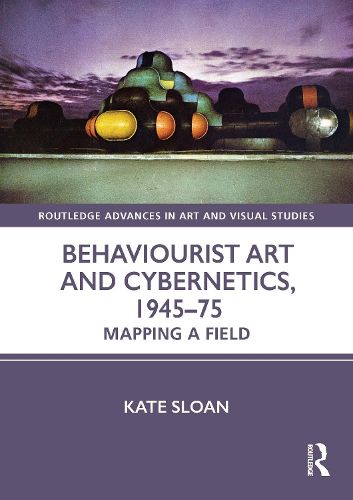Readings Newsletter
Become a Readings Member to make your shopping experience even easier.
Sign in or sign up for free!
You’re not far away from qualifying for FREE standard shipping within Australia
You’ve qualified for FREE standard shipping within Australia
The cart is loading…






Drawing together key areas of cybernetic art practice in the UK and USA, this book assesses British and American cybernetic art as relating to the intersecting field of Behaviourism.
This study takes as a starting point Roy Ascott's essay 'Behaviourist Art and the Cybernetic Vision' (1966) and uses it to define a field of Behaviourist art from the period 1945-1975. Kate Sloan establishes the role of the cybernetic concept of feedback as a defining factor in understanding works of art as behavioural, expanded well beyond the perimeters of what we consider cybernetic art. The book also demonstrates how light, as a behavioural trigger, informed several discrete areas of art making, from cybernetic art to countercultural light shows and behaviourist architectures.
The book will be of interest to scholars working in art history, technology studies, music history, architectural history, and design history.
$9.00 standard shipping within Australia
FREE standard shipping within Australia for orders over $100.00
Express & International shipping calculated at checkout
Drawing together key areas of cybernetic art practice in the UK and USA, this book assesses British and American cybernetic art as relating to the intersecting field of Behaviourism.
This study takes as a starting point Roy Ascott's essay 'Behaviourist Art and the Cybernetic Vision' (1966) and uses it to define a field of Behaviourist art from the period 1945-1975. Kate Sloan establishes the role of the cybernetic concept of feedback as a defining factor in understanding works of art as behavioural, expanded well beyond the perimeters of what we consider cybernetic art. The book also demonstrates how light, as a behavioural trigger, informed several discrete areas of art making, from cybernetic art to countercultural light shows and behaviourist architectures.
The book will be of interest to scholars working in art history, technology studies, music history, architectural history, and design history.